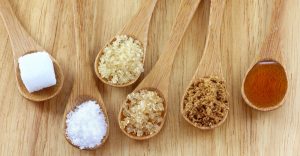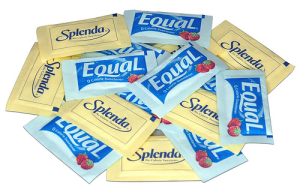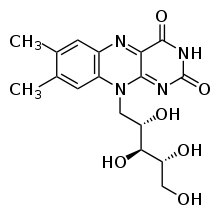Nowadays, you can see vitamin c everywhere, especially in the drug store. The article here is to better understand this product.
What Is L-Ascorbic Acid?
L-Ascorbic acid is an antioxidant, also known as Vitamin C (VC), naturally found in food and used as a vitamin supplement.
It is used as an antioxidant in food. It is necessary to form collagen, an important protein used to make skin, scar tissue, tendons, ligaments, and blood vessels. It is also essential for the healing of wounds, and for the repair and maintenance of cartilage, bones, and teeth.
Chemical Structure
Its chemical structure is similar to glucose and is a polyhydroxy compound. Its two adjacent enol-type hydroxyl groups on the 2nd and 3rd positions in the molecule are easily dissociated to release H+, so it has the property of acid.
Food Sources
The main food source of Vitamin C (L-Ascorbic acid) is from fresh vegetables and fruits. The high source in vegetables like pepper, garland chrysanthemum, bitter gourd, beans, spinach, potatoes, leeks, etc. And The fruits like jujube, fresh dates, strawberries, citrus, lemon and so on are high with VC.
D and L Types
Ascorbic acid has two forms, L-type and D-type, but the latter has no biological activity.
L-Ascorbic acid
We call Vitamin C in the market is usually the L form. L type can be derived from both natural (fruits and vegetables) and synthetic manufacturing process. It is commonly produced synthetically which is sold as the raw materials in the market.
D-Ascorbic acid
Although the chemical properties of D-ascorbic acid is same with L-ascorbic acid, it shares a different structure, that makes it impossible for D-ascorbic acid to be synthesized by your body and cannot be used as a vitamin supplement. Thus, it has no biological activity.
Property
It is a colorless, odorless crystal powder that is easily soluble in water and insoluble in organic solvents. Stable in acidic condition, but will be oxidized under the condition of oxygen, heat, light and alkaline substances in the air.
| Chemical Formula | C6H8O6 | |||
| Molecular Weight | 176.1 | |||
| Function | It is mainly used to production of various medicines as clinically important material for supplementary cure practice in different sectors. When used as a food additive, it acts as superior and reliable agent in nutrition, antiseptic and flour processing aspects. It also helps enhance the immune system of animals when used in feed additives. | |||
| Solubility | Freely soluble in water, sparingly soluble in ethanol (96%). | |||
| Melting Point | about 190ºC, with decomposition |
Manufacturing process
The manufacturing process of VC is from fermentation, two microbial are used, The ‘Black acetic acid bacteria’ is used in the 1st step fermentation. ‘Bacillus megaterium’ and ‘Gluconobacter oxydans’ are used in the 2nd step fermentation. Totally 24 processes are needed to get the finished product- Vitamin C.
Below is the brief flow chart and you’ll see how is L- ascorbic acid made and where does it come from fermentation and chemical synthesis.
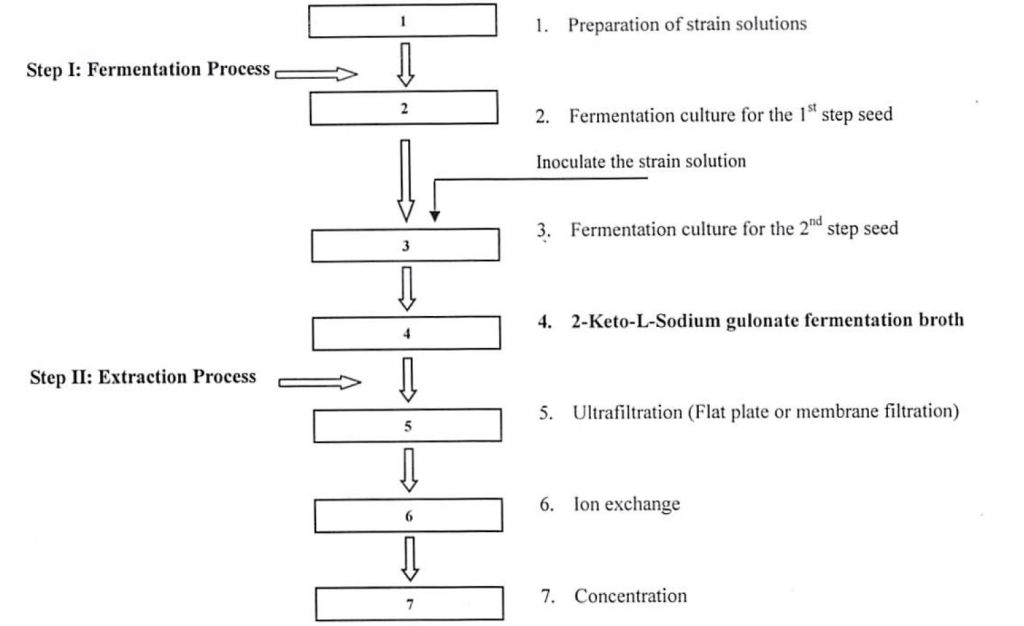
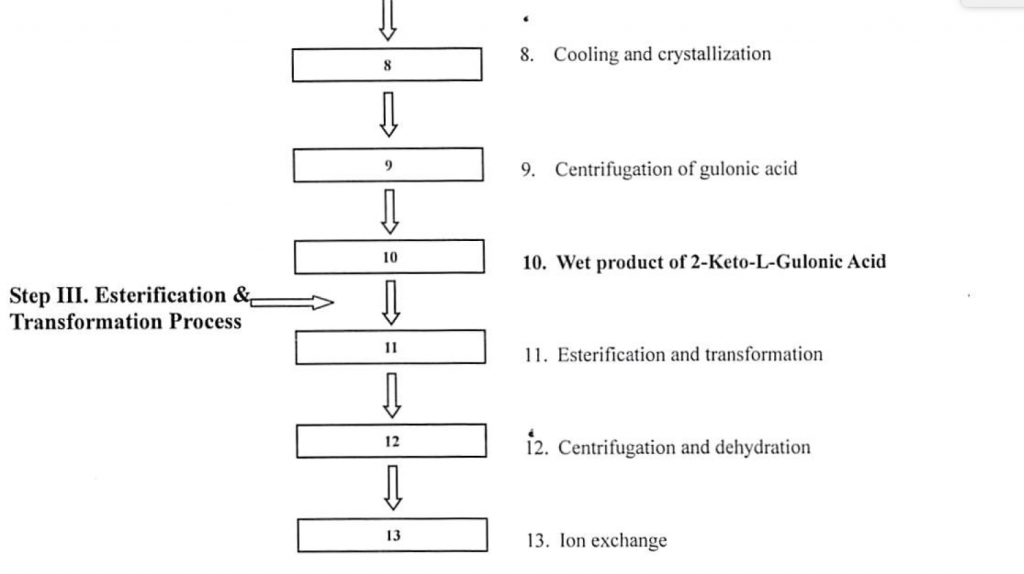
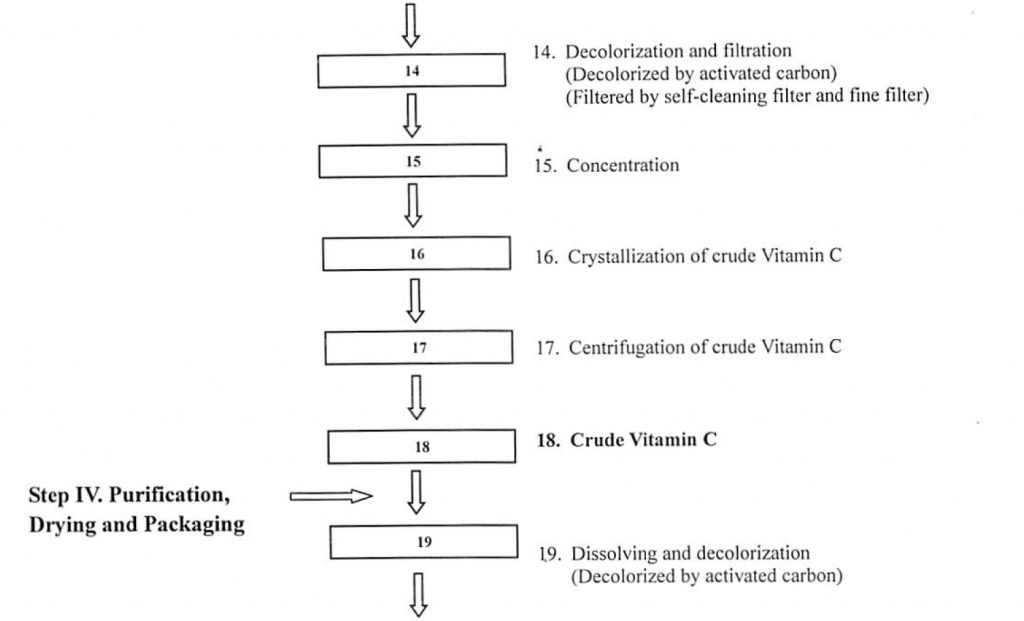
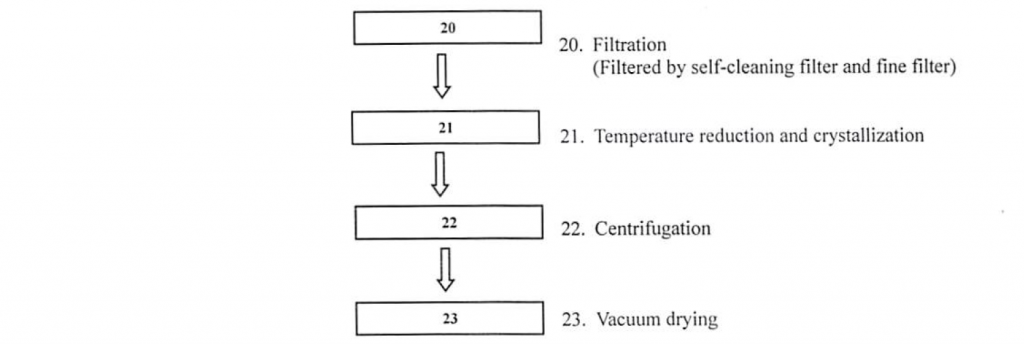
What Are Health Benefits To Our Body?
The benefits including:
- form antibodies and collagen
- the repairment of tissue (including some redox)
- the metabolism of phenylalanine, tyrosine and folic acid
- the utilization of iron and carbohydrates
- the synthesis of fat and protein
- the maintenance of immune function, hydroxyl and serotonin
- maintain the integrity of the blood vessels
- promote the absorption of non-heme iron and other necessary
Also, it has the benefits of anti-oxidation, anti-free radicals can inhibit the formation of tyrosinase, so as to achieve whitening, blemish effect.
In humans, VC is a highly effective antioxidant that is used to reduce the oxidative stress of ascorbate peroxidase substrates. There are many important biosynthetic processes that also require it to participate.
What Are Uses In Our Daily Life?
Food
It can be used as nutritional supplements, Antioxidants, Color protection agents in food. As Vitamin C (L-Ascorbic acid) is not sour and soluble in water, it is easy to use. Ascorbic acid is generally used for jams, canned fruits, transparent hard candies, fruit juices and etc. Sodium Ascorbate is used in ham, sausages, fish cakes to fix the flesh color and keep it fresh. If ascorbic acid is used, the pH will decrease and the water retention will be affected. It has the effects of preventing oxidation and stabilizing the color of chilled aquatic products.
Feed
It can be used in feed additives. Not like Vitamin B series, which used widely in feed than food, Vitamin C is used much in food than feed.
Cosmetic
Its salts are used in a variety of cosmetics and personal care products including makeup, as well as skin and hair care products as antioxidants to slow deterioration caused by exposure to the air and also to control the PH of the finished product.
What Are The Possible Side effects?
Allergy symptoms
Seldom people are allergic to Ascorbic acid. When taking a vitamin C supplement or a beverage that contains ascorbic acid, such as fortified juices, the allergy symptoms may include asthma, headaches, itching, fatigue, skin rashes, runny nose, sniffling, wheezing and congestion. Common skin allergy symptoms include hives, eczema and general skin itching.
Market
Market demand will increase
Global Vitamin C (L-Ascorbic acid) market is expected to witness growth over the forecast period owing to increasing demand from industries including food & beverage, pharmaceuticals, chemicals, personal care and cosmetics.
In addition, growing demand for potassium, calcium and sodium salts of ascorbic acid as an antioxidant food additive is expected to drive the market over the next six years. Uncertain raw material supply and resulting price fluctuations are anticipated to hamper the market growth (in the 2017 market). Now the market price seems to go down to a normal level.
China is the big Vitamin c manufacturer, and almost all VC in global market is from China. Manufacturers and suppliers in China like:
- DSM
- CSPC Pharma
- Shandong Luwei
- Northeast Pharma
- Ningxia Qiyuan
- Zhengzhou Tuoyang
The export quantity from China has increased year by year, with 131,000 tons exported in 2016 and 148,000 tons exported in 2017. However, compared with the domestic total production capacity of 200,000 tons, the industry is still in surplus.
Since 2012, the unit price of export has remained at around 3.6 U.S. dollars per kilogram for a long period of time, resulting in a loss in the entire industry. In 2017, with the government strict control in environmental pollution and other conditions, the price of Vitamin C increased a lot even more than USD10/kg.
From January to December of 2017, China exported 148,796 tons of vitamin c, which increased by 13.4% compared with that in 2016. From January to December of 2017, the number of China’s exports was US$ 879,741,000, an increase of 104.1% than in 2016.
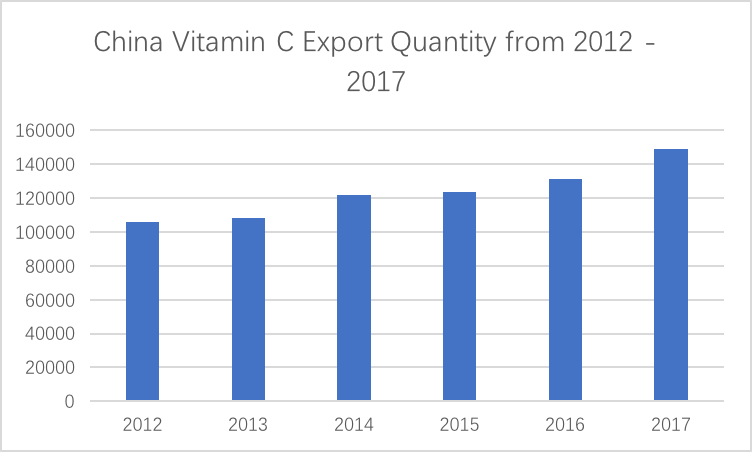
China Vitamin C Export Quantity from 2012 – 2017
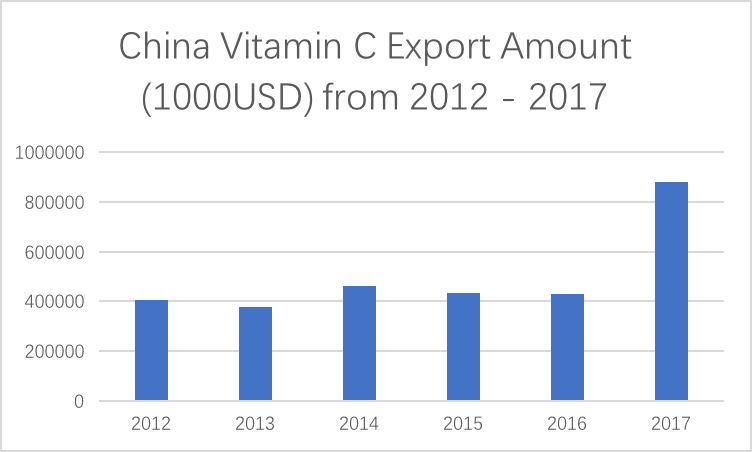
China Vitamin C Export Amount (1000USD) from 2012 – 2017
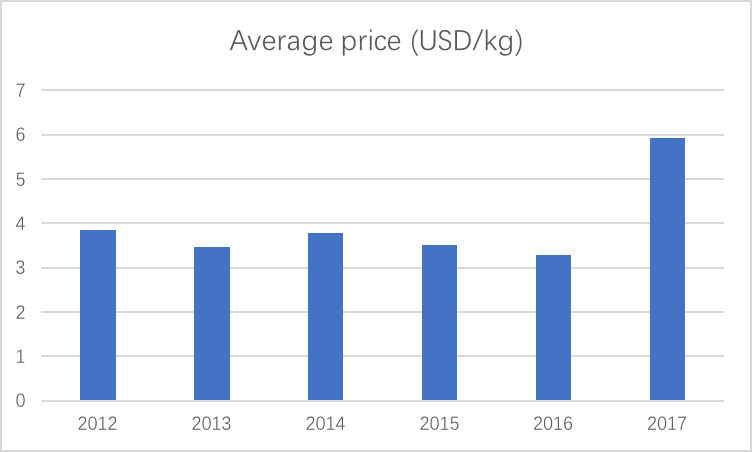
China Vitamin C Export average price from 2012 – 2017

